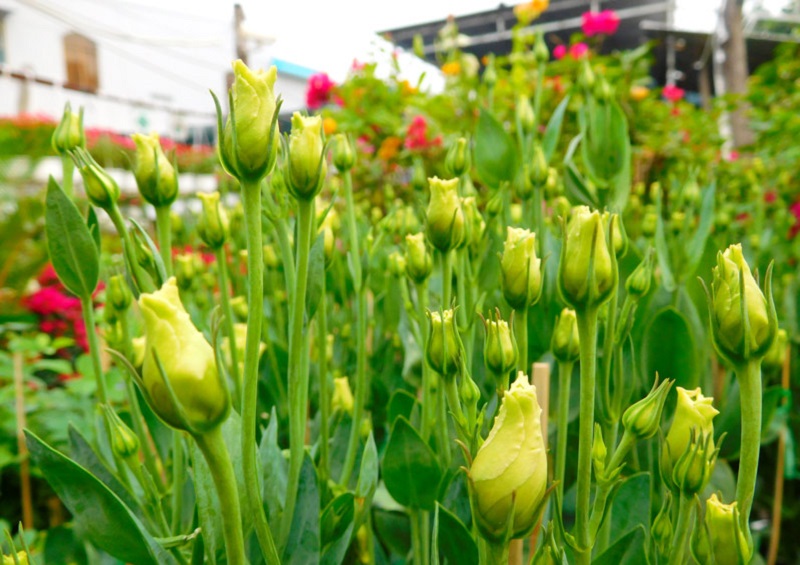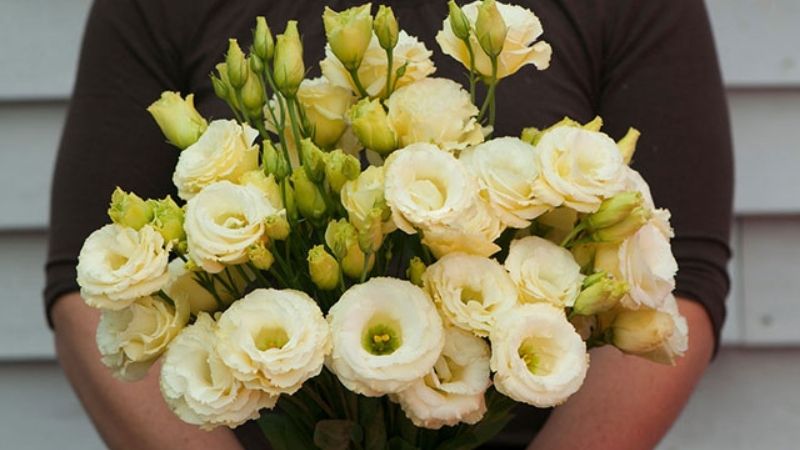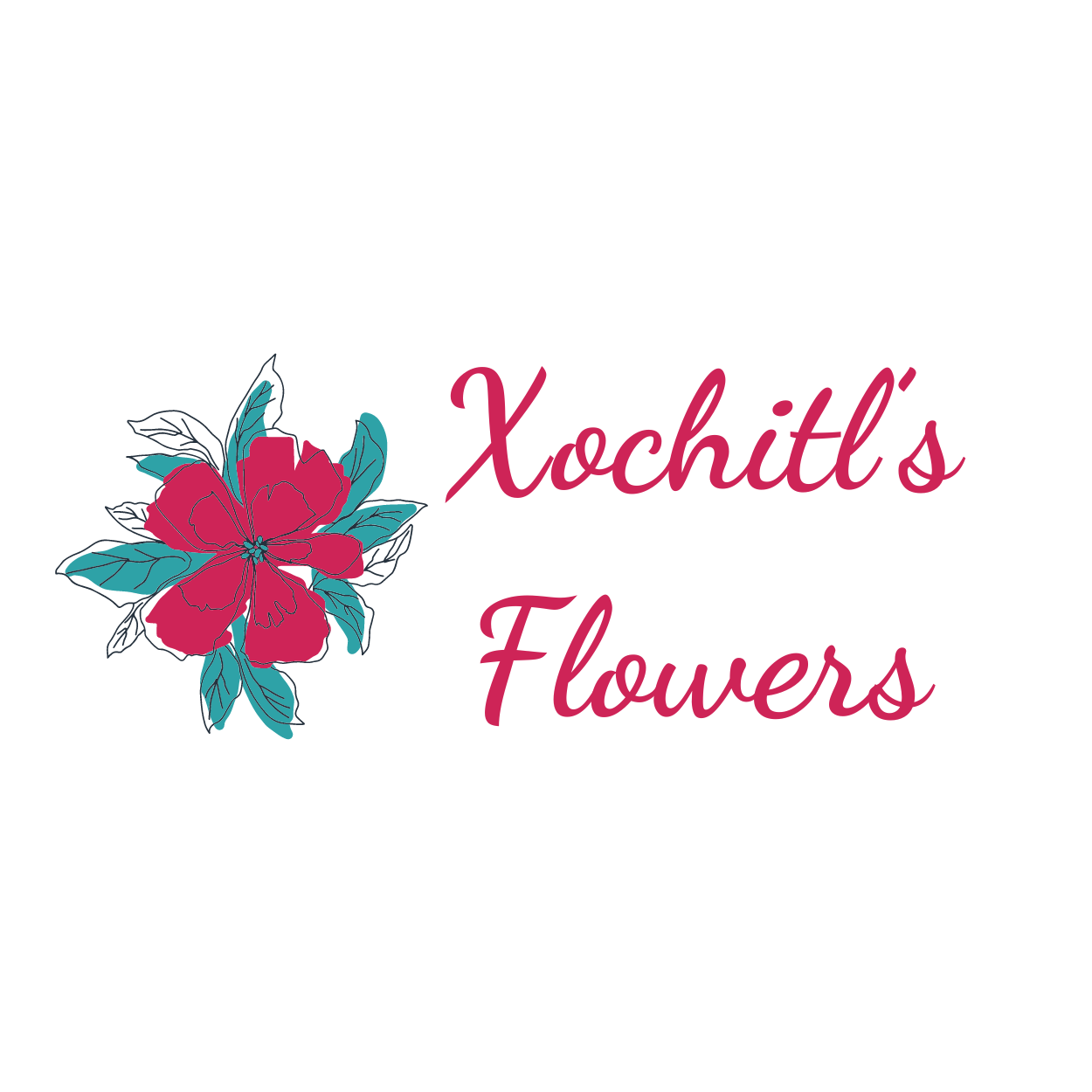Lisianthus, known for its delicate beauty and versatility, is a favorite among gardeners and florists. The Yellow Lisianthus, in particular, stands out for its vibrant, cheerful hue. This guide provides detailed information about Yellow Lisianthus, including its botanical characteristics, growing requirements, and various uses. Whether you’re a seasoned gardener or simply fascinated by floral beauty, this article will help you make the most of this elegant flower.
Botanical Characteristics
Scientific Classification
Yellow Lisianthus, scientifically named Eustoma grandiflorum, is part of the Gentianaceae family. This species, often referred to as Prairie Gentian or Texas Bluebell, features several color varieties, with the yellow one being notably striking.
Physical Description
The Yellow Lisianthus is renowned for its bell-shaped blooms, ranging from soft, buttery yellow to vivid, golden tones. These flowers are large, with a smooth, silky texture. The plant’s lance-shaped leaves are dark green, providing a beautiful contrast to the bright flowers.

Growth Habits
Typically, Yellow Lisianthus grows upright, reaching heights of 12 to 18 inches. It has a slow growth rate, taking several months from seed to bloom. While it is generally grown as an annual, it can act as a short-lived perennial in warmer climates.
Growing Yellow Lisianthus
Ideal Growing Conditions
To thrive, Yellow Lisianthus requires well-draining soil with a pH between 6.0 and 6.8. It prefers full sun to partial shade, with temperatures ranging from 65°F to 75°F (18°C to 24°C). Although it can handle cooler temperatures, it is sensitive to frost.
Planting Guidelines
Plant Yellow Lisianthus in the spring after the last frost. Start seeds indoors 8 to 10 weeks before the last frost or buy young plants from a nursery. Space plants 6 to 8 inches apart to accommodate their growth. Transplant outdoors once they are well-established and the frost threat has passed.
Care and Maintenance
Regular watering is crucial for Yellow Lisianthus. Keep the soil moist but not waterlogged. Fertilize every 4 to 6 weeks with a balanced, water-soluble fertilizer. Monitor for pests like aphids and spider mites and manage diseases such as powdery mildew with appropriate treatments.
Common Challenges
Yellow Lisianthus may encounter issues such as poor germination or slow growth. Ensure proper soil conditions and avoid overwatering to prevent root rot. Sparse blooms might require adjustments in light conditions or more frequent feeding.
Uses and Benefits
Ornamental Uses
Yellow Lisianthus is highly valued in garden design and floral arrangements. Its vibrant color adds elegance and brightness to any setting, making it a popular choice for bouquets, centerpieces, and garden beds.
Symbolism and Significance
In many cultures, yellow flowers symbolize happiness, positivity, and new beginnings. Yellow Lisianthus, with its radiant hue, is often used to celebrate joyful occasions and events.
Health and Wellness Benefits
Aside from its aesthetic appeal, Yellow Lisianthus is used in floral therapy to enhance mood and create a calming environment. The presence of bright flowers can positively impact mental well-being.
Harvesting and Preservation
Harvesting Techniques
Harvest Yellow Lisianthus when buds are just starting to open. Cut the stems at a diagonal angle and place them in water immediately to extend their vase life.
Preservation Methods
To preserve Yellow Lisianthus, consider drying or pressing the flowers. Hang stems upside down in a cool, dry place for drying, or use pressing techniques for crafts and decorations.
Varieties and Hybrids
Notable Varieties of Yellow Lisianthus
Popular Yellow Lisianthus varieties include ‘Yellow Sun’ and ‘Buttercup,’ known for their bright blooms and reliable performance. Each variety offers unique traits and aesthetic qualities.

Hybridization
Hybrid Yellow Lisianthus varieties are bred to enhance specific traits, such as flower size or color intensity. These hybrids offer special options for both gardeners and florists.
Purchasing and Availability
Where to Buy
Yellow Lisianthus can be found at local nurseries, garden centers, and online stores. Choose reputable sources to ensure healthy plants or cut flowers.
Price Range
Prices for Yellow Lisianthus vary based on plant size, variety, and source. Generally, seeds or young plants are more affordable, while mature plants or premium blooms may be pricier.
Quality Indicators
When buying Yellow Lisianthus, select vibrant, healthy blooms with no signs of wilting or disease. For cut flowers, choose stems with firm buds and minimal damage.
Conclusion
Yellow Lisianthus is a captivating flower that adds elegance and cheerfulness to any garden or floral arrangement. Its vibrant color and graceful form make it a valuable addition to both indoor and outdoor spaces. By understanding its growing requirements and care tips, you can fully appreciate the beauty and benefits of this remarkable flower. Whether you’re cultivating it in your garden or incorporating it into floral designs, Yellow Lisianthus offers a touch of sophistication and sunshine.
